I grew up drinking tea that was made by pouring boiling water over a tea bag and taking the bag out when the color “looked about right.” Then, last week, a tea head friend came for tea and informed me I was doing it all wrong. She’s something of a tea expert so naturally, I was quite nervous!
How to make green tea? Making green tea the correct way is a straightforward process not too dissimilar from making black tea. However, the method for each of the three types; leaves, bags, and powder, are all subtly different. Here’s how to make green tea the simple way, from each of the three forms.
The answer may seem simple enough, but she set me the task of finding out how to make the perfect cup of green tea… quite rightly pointing out that I couldn’t possibly own a tea blog and not write about ‘how to make green tea!’
While I was researching I found out so much more than just a few brewing tips.
First, my favorite method…
How To Make Green Tea With Leaves
Using tea leaves is the traditional and most authentic way in which to make green tea. This is the basic “in pot” method but later we will look at using infusers and in “in cup” methods.
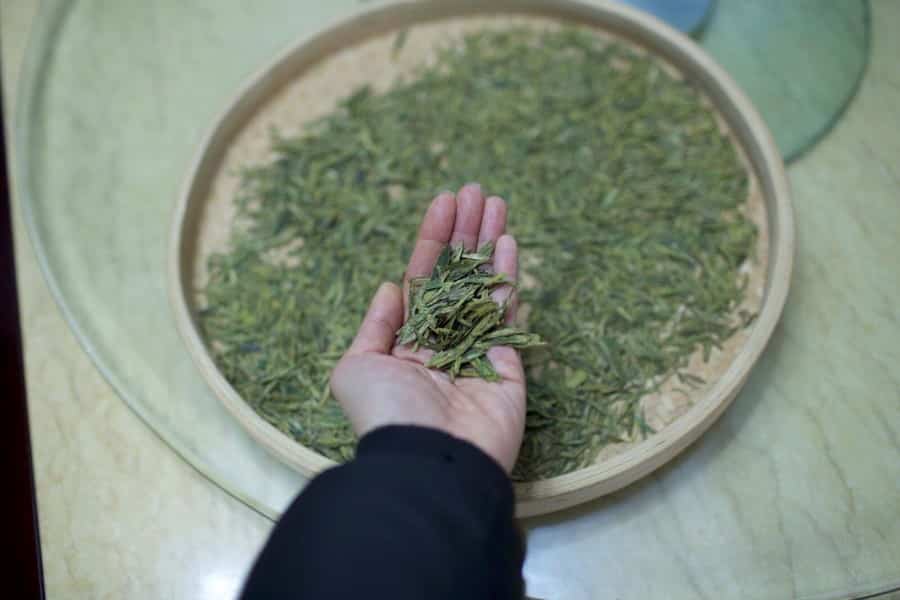
How To Make Green Tea
With Leaves
What You Need
- Green tea leaves. One teaspoon of leaves per cup of tea.
- 1 Cup
- 1 Pan or kettle
- 1 Teapot
- 1 Tea Strainer. Do not use the same strainer for green and black teas.
- Water, 8 ounces per cup plus 6 ounces for warming the pot
Method
The steps to making green tea are few, but the details of each step are extremely important.
- Heat the water to between 176°C to 185°F. Do not allow the water to boil.
- Pour some of your hot water into the teapot and allow it to warm. Once the pot feels warm, pour this water away.
- Put the leaves into the teapot and pour on the water.
- Place the lid on your pot and leave to steep for two minutes. Take a small taste to check the strength. If it is not strong enough, taste every 30 seconds until you reach the desired strength. Do not leave any longer than five minutes.
- Pour the tea into the cup, using a tea strainer to capture the leaves and enjoy.
How To Make Green Tea With Tea Bags
Loose tea may be preferable but teabags are a convenience for many people. You can carry them with you and enjoy your green tea anywhere, you can even make your own green tea teabags.

How To Make Green Tea
With Tea Bags
What You Need
- 1 Green teabag. Use the best quality you can find
- 1 Cup
- 1 Pan or kettle
- 1 Lid to cover the cup
- Water 8 ounces
Method
The steps to making green tea with teabags are few, but the details of each step are extremely important.
- Heat the water to between 176°C to 185°F.
- Put your tea bag in your cup and fill your cup with water.
- Cover the cup with a small lid and leave for two minutes. Take a small taste to check the strength. If it is not strong enough, taste every 30 seconds until you reach the desired strength. Do not leave any longer than five minutes.
- Remove the tea bag and enjoy.
How To Make Green Tea With Powder
Matcha is a specific kind of green tea which is grown and prepared slightly differently and then used in a powdered form. While traditionally prepared in a tea bowl and a bamboo whisk, this method is how you can make green tea with Matcha in a cup, without a whisk.
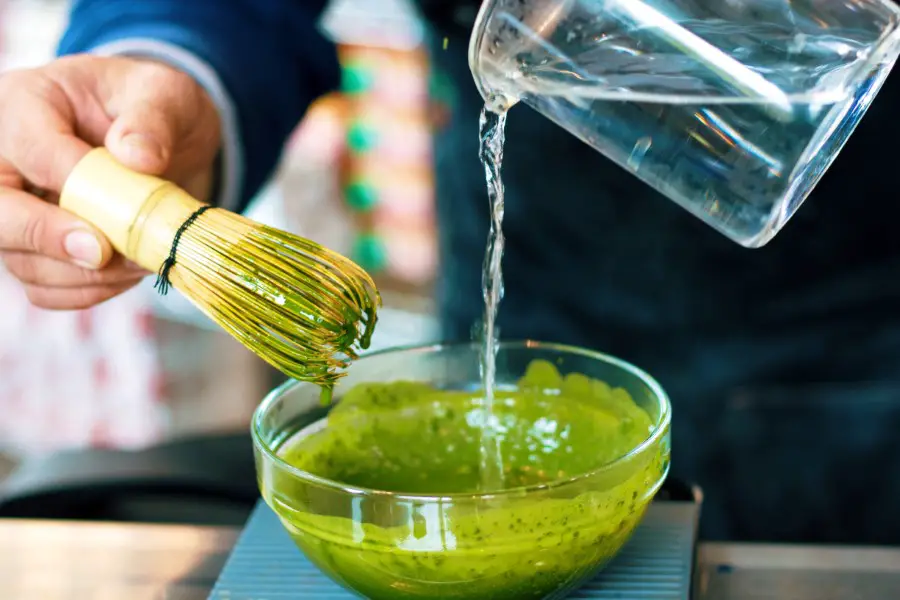
How To Make Green Tea
With Powder
What You Need
- Green tea powder. Half to one teaspoon of powder per cup.
- 1 Cup
- 1 Pan or kettle in which to boil the water.
- Water 8 ounces for one cup
Method
Some methods will tell you to strain the Matcha after you have prepared it, but this is incorrect. The idea of a good Matcha is to have the particles evenly suspended in the water.
- Heat the water to between 176°C to 185°F.
- Spoon your matcha into your cup and add enough water to make a smooth paste.
- Once you have made sure there are no lumps add the rest of your water, stirring while you pour to ensure an even distribution of the powder
- Enjoy your green tea.
These three simple methods may look like all you need to know. However, the difference between a bad cup, a good cup, and a great cup of green tea is all in the detail. There is plenty to learn about the preparation, storage, and use of this beverage that has been enjoyed for millennia. There are endless varieties to choose from, recipes for green tea foods and drinks, and as for the health claims, well, read on to find out.
Make The Perfect Cup Of Green Tea
Many people who try green tea find the taste bitter and off-putting, but there is a myriad of reasons why so many brews turn out this way. Every detail, from the water you use to the cup from which you drink, has the potential to alter the taste of your tea.
So, let’s take a look at each step in the process, and every item used, then uncover the secrets to making a spectacular cup of green tea. First up are your ingredients.
The Tea
First up is the star of the show, your green tea. The quality of your final beverage will always be dependent on the tea that you use. For this reason, you should look at the following factors:
Origin
China and Japan are the world’s top green tea growers, and most of the tea you find will be from one of these countries. However, you can buy leaves that are grown in many places around the world, from places as diverse as New Zealand or even South Carolina.
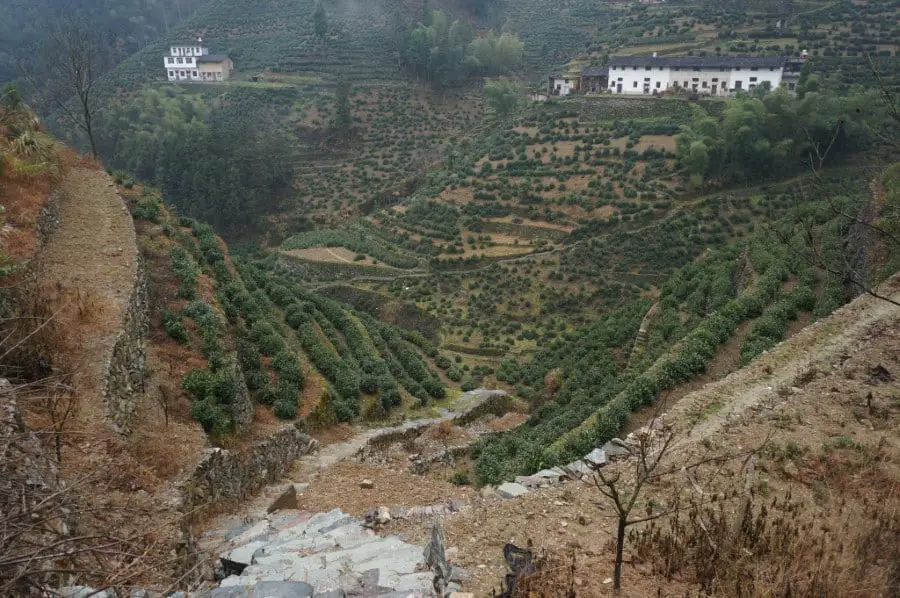
The particular species of tea plant which is used for green tea production is Camellia sinensis which is native to China.
Although the country is still a powerhouse in tea production the quality of green tea depends on the region in which it is grown, especially as large areas of the country are heavily polluted.
Green tea from Sichuan is the safest bet for a quality green tea from China and you should avoid tea from the industrial region of Shizuoka. The area of origin should be on the tea label.
Your best bet today is usually a green tea from Japan. With limited production capacity, they choose to produce only the best quality tea in order to maximize their income. Failing that, green tea from Sri Lanka is another good option
Age
Green tea should always be used within 12 months of being picked, ideally within 6 months. The sooner the better. So if you’re in a position to buy fresh tea, do so, but use it quickly.
Harvest
First harvest leaves are the best with the quality being reduced with each successive harvest.
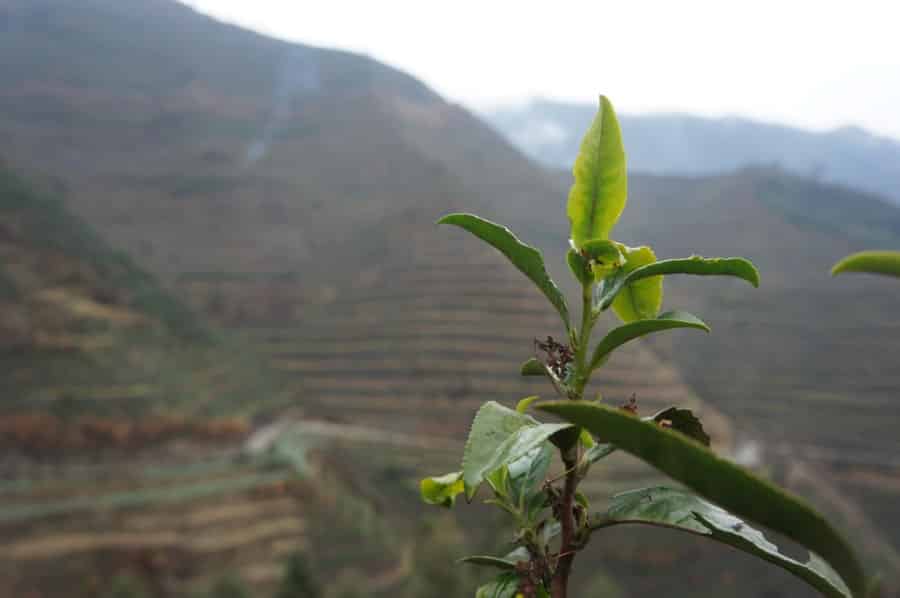
Certifications
Many teas are certified as organic or Fair Trade, or both. While these are both important designations, they do not guarantee the quality of the tea. Fair Trade tea can still be grown in an area contaminated by pollutants or with inferior plants.
Meanwhile, organic tea may not have had pesticides used on it but it could still have been grown in an industrial region and can contain high levels of heavy metals and other contaminants.
We’ll take a look at the different types of green tea and their characteristics a little later.
Your Water
Green tea made from the same batch of leaves will taste different in a hard water area then it will in a soft water area. The mineral content of the H2O used for brewing has a direct impact on the finished product.
Although you can install filter systems on your taps or buy bottled water, neither of these costly options is essential. A simple plastic jug with a carbon filter will be sufficient to ensure you have the best quality possible.
Once you have your water quality sorted, you need to learn how to heat it. Yes, you read that right, you need to learn how to heat your water correctly if you are to make the perfect cup of green tea.
First up, there is much debate on whether or not you can let your water boil and then cool, or use water that has been boiled more than once. You might have heard about “dead” water or read that boiling affects the concentration of impurities or oxygen.
To cut a very long story short, having read all of the scientific studies I can confidently tell you the idea of dead water is a very subjective matter.
Okay maybe that’s a cop-out, but honestly, it’s a tough call. Some say there’s no such thing as “dead” water and as long the water is the correct temp when it hits the leaves, whether or not it has been boiled makes no difference. I kind of go the other way as I’ve tasted both.
Either way, I put everything I knew about the right and wrong ways of boiling tea in this article.
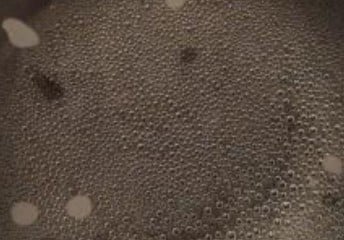
Which takes us to the water temperature. The leaves of the green tea plant are delicate. If you pour boiling water onto your tea you will end up with a bitter-tasting cuppa. Instead, your water should be between 176°F to 185°F for most teas. Some of the more delicate Japanese green teas should be brewed in the slightly lower temperature range of 160°C to 170°C.
If the ideal temperature range to brew your tea is at the lower end of the scale, this information is usually included on the packaging.
So, now we have our ingredients sorted, what about our equipment?
The Kettle
Advice about the type of kettle used to boil your water varies according to which website you are reading. Having spent many hours reviewing much of the available information I can tell you conclusively that there isn’t any one type of kettle you should use.
Some swear by a stainless steel kettle, claiming it is least likely to contaminate the water while others swear it taints the water and hence the tea. Glass kettles are universally approved of – unless they are electric, in which case they’ll have a metal element which brings us back to the first issue.
Authentic Clay Yixing kettles get a huge thumbs up from me, but there are all kinds of discussions around whether or not to clean it and how to season it, with what tea etc. If you’re starting out with tea then you can just keep it simple.
When it comes down to it, a clean kettle, without scale build up will do the job.
But then, I’ve tested lots of them already. If you can’t find one you like, you can find which kettles of all the main types I’d recommend, as well as recommended other tea gear here on my Tea-Wares page.
Cups And Tea Bowls
The vessel from which you drink your tea doesn’t always get a lot of consideration. Most of us have a favorite cup or mug, but beyond that, we tend to give the matter very little thought.
Purists would say that you should drink from a traditional tea bowl, much like a cup from a cup and saucer set without the handle. Tea bowls can become uncomfortably hot for some people but they are especially good for Matcha where the preparation benefits from the wider surface area to whisk.
Stick with the cup you like to use unless, of course, you feel like splashing out on a pretty and nostalgic teapot and cup and saucer set, or maybe a sleek, modern pot and cup. In my opinion, you should always sip tea with style, so take a look at some of the fabulous options available today
The Teapot
When using leaves you can either brew in the cup with a strainer or brew in the pot. Many teapots now have built in infusers so you no longer need to have a strainer with which to serve your perfect cup of green tea.
There are only a couple of golden rules for your teapot, but they are important ones.
- Always warm your pot before making your tea. Heat more water than you need, pour a half inch into the bottom, swirl it around and leave it to stand for a minute. Then pour out the water and dry the pot before putting your leaves in.
- When you pour in the water, tilt the pot a little and allow the water to run down the sides and fill your teapot.
- Always place the lid on your pot as soon as you have poured in your water.
- Use the appropriate size teapot for the amount of tea you are brewing.
I love teapots, I’ve got a fair few of them now, check out which ones I like the best for doing the right job.
The Strainer
You can use any traditional external tea strainer to catch the leaves from your teapot but remember to have separate strainers if you drink green tea and black tea as the flavors can mix if you use the same strainer for both. When buying an external strainer, make sure the mesh is very fine, otherwise, you might have pieces of leaf passing through and into your cup.
In-cup strainers should be as wide and deep as possible to allow the leaves plenty of room for movement during the steeping process.
This brings us neatly to infusers.
Infusers
Infusers have become a popular way to brew tea. They combine the convenience of tea bags with the freedom to use any type of tea you wish with which to brew your beverage. For many kinds of tea, they are an excellent option. I’d recommend checking out my list of best infusers to find the perfect one
However, in order to brew the perfect cup of green tea, you need to give your leaves space to move. This allows the water to penetrate every last piece of the tea and gently extract the delicate flavors.
By using a smaller “reusable tea-bag” type infuser you are holding the green tea tightly together and will end up with a weak, underflavored tea.
In-pot or in-cup infusers of the large “open basket” variety do not restrict the leaves and are an excellent alternative to the strainer.
To see my preferred infuser, take a look at my favorite Infuser here. If you still don’t know what an infuser or a strainer is, then check my article here.
Varieties of Green Tea
When the tea is picked, it immediately begins to oxidize. When oxidization is allowed to happen you end up with black tea.
In the case of green tea, farmers stop the oxidization process by one of two methods – steaming or roasting. To find out the fascinating story of how tea is made from start to finish, check my article here
Roasting is the method of choice for Chinese green tea farmers who pan-fry the freshly picked leaves.
This process flattens and dries out the leaves, making them less flexible and less vibrant in color than their cousins in Japan where leaves are steamed.
The variations in plant species, the area in which it’s grown and the method by which it’s treated will all combine to give your green tea particular characteristics. This leads to a wide variety of green teas. These are the most common and the most popular.
- Sencha The most commonly consumed variety of Japanese green tea, Sencha is grown in direct sunlight and is usually harvested during the first or second growth of leaf. Sencha leaves are steamed and rolled. This process allows the juices of the leaf to be released leading to an intense flavor. If you cannot find it locally, then you can get it here from Field-to-Cup
- Gyokuro Sometimes known as “Jade dew” is grown on bushes that are covered in cloth screens in order to shade them from the sun. This shading process limits the generation of catechins from amino acids leaving the tea with a smoother, lighter taste. You can find it online here
- Bi luo chun (pron: Pi Lo Chun) Grown in the country where it all began, Bi luo chun green tea is grown in the mountain region of Chinas Dongting. The name means “green spring snail” and comes from the distinctive, tight spiral shape into which the leaf is rolled during processing. If you can’t find it locally, then you can buy it online here from TeaVivre
- Longjing Another, extremely popular Chinese green tea, Longjing translates as “Dragon Well” which is the name of the village the tea was first produced. A good quality Longjing will have a mild, slightly sweet flavor with notes of chestnut waiting in the wings. If you like the idea of this one then you can get it here
- Genmaicha Literally translates as “brown rice tea” this Japanese green tea is made with brown rice. Before being mixed with the tea, the rice goes through a steaming, followed by roasting before being popped and combined with Sencha tea leaves in a half-and-half mix. This gives a particularly savory, roasted nut edge to the tea, making it an ideal starter for coffee drinkers. You can get it online here if you cannot locate it nearby
- Hōjicha This tea is frequently mistaken for Genmaicha as they both have a similar roasted nut quality to their flavor. In the case of Hōjicha, this taste is achieved by roasting the leaves. The story goes that Kyoto tea merchants were looking for ways to salvage unsold leaves that might otherwise be thrown away. One tried roasting them over charcoal, and hey presto Hōjicha was born. Try it from here if you can’t locate it.

The Best Green Teas
How to make green tea is a clearly documented process with few deviations so it is relatively easy to write about. Which green tea to buy, however, is another matter.
When you first begin to enjoy green tea it is very much a matter of trial and error, finding a brand, a leaf, and a taste you enjoy so it is impossible to say “You will like this one the best.”
If you’re new to tea, then I strongly suggest checking out my article on Best Teas for Beginners.
What I can do is let you know some of the best quality and uniformity enjoyed Green teas and you can make these the starting point for your tea adventure. So here, in no particular order, are some of the best teas that I’d say are definitely worth a try.
Organic Matcha by Kiss Me Organics
The perfect choice for first-time matcha, this powder is organic green tea in its purest form.
An excellent, high-grade product that is suitable for both drinking and cooking.
Twinings Jasmine Green Tea With Jasmine
Don’t be put off by the jasmine teas you may have experienced in the past. Many of the jasmine green teas used in restaurants are of lower quality and steeped too briefly resulting in a cup that resembles a bland, watery perfume.
Made by one of the world’s most famous tea brands, this Twinnings green tea is made with the addition of jasmine blossom to give your cup a very delicate, slightly floral flavor that bears no resemblance to anything you have tried before.
Numi Tea
All Numi teas are USDA-certified organic, carbon-free, gluten-free, and certified vegan. They are also Halal and Kosher. All Numi teas are free from pesticides and any harmful or harsh chemicals.
They come from the first Fairtrade tea gardens in China and are a wonderful introduction to green tea from China.
Uncle Lee’s
If you are looking for teabags, Uncle Lee’s might be the way to go. These bags are extra large to accommodate the whole tea leaves. This allows you to brew a stronger cup of green tea, without over-steeping and turning the tea bitter.
An added bonus for those who wish to use products that are as unprocessed as possible, the bags are oxygen bleached.
To find out more about choosing tea bags without plastics and those that you can compost see This Article, which lists the most common varieties in the world and their plastic components.
Green Tea Buying And Storage
If you are buying prepackaged tea, or tea bags ensure they are date stamped and use them within a year, at the most. No digging out an old tub of teabags and expecting a good result!
If you want to know more about storing tea? then check my article here, I did a load of research about freezing and storing tea.
When buying fresh tea the one-year rule still applies and to be on the safe side I’d recommend using it within six months of purchase. Beyond that point, the flavor deteriorates rapidly.
Store your tea, in whatever form you choose to use, in an airtight container, away from heat or sunlight.
Do not use glass containers because although they look good, especially in a row with different kinds of tea, the exposure to light will affect the quality and subsequent taste of your tea.
Find out the best way to store your tea
Green Tea And Health Claims
It is almost impossible to read about green tea and not come across the claim that it does everything from keeping you young and spry to curing cancer. Many of these claims are spurious, and plenty is downright dangerous. I am going to restrict myself to sharing a few health benefits that have the benefit of science-backed evidence.
Green teas health benefits arise from its high level of catechins, antioxidants that fight cell damage. Your green tea cuppa is rich in catechins because the leaves receive so little processing.
According to a number of trustworthy medical sites green tea has been shown to:
- Lower LDL cholesterol (sometimes known as “bad cholesterol”), and triglyceride levels.
- Reduce the risk of heart disease. Those who drink one or two cups of green tea a day have a 46 percent lower risk of developing narrowed arteries. Three cups a day lowers the risk of having a heart attack by 43 percent and of dying from a heart attack by 70 percent.
- Boost brain power. One study showed that drinking one cup of green tea a day made participants aged 55 and older 38 percent less likely to experience a decline in their mental abilities. Drinking a second cup daily made them 54 percent less likely to show mental declines as they age.
- Reduce acne. By using cooled green tea as a face wash, or placing a used teabag on especially bad spots, those suffering from mild to moderate acne saw up to two-thirds of their pimples clear completely.
- Reduce insulin resistance and help maintain healthier blood sugar levels in people with type 2 diabetes. Drinking five cups of green tea a day is also shown to reduce the risk of developing type 2 diabetes in those who are at high risk. Just remember not to add sugar or honey.
There are many other health claims which may or may not be accurate. If you have any serious health issues check with your doctor before drinking plenty of green tea, as there are a handful of medications it can affect.
If you are otherwise healthy, feel free to make a cup of green tea, sit back, and relax, and enjoy all of the proven, and potential health benefits.
Green Tea Recipes
We all need a little variety now and again so here are some of my favorite ways to enjoy green tea, other than in its most simple form.
Green Tea Hot Chocolate
Deliciously creamy wintertime treat, this hot chocolate can be made with white, milk, or dark chocolate, depending on your tastes.
Ingredients
- 3-4 large squares of white chocolate
- 1-1 ½ tsp matcha
- 1 cup milk
Method
- Melt your chosen chocolate gently in the microwave, add the matcha and mix until you have a paste
- While you are mixing your paste, heat the milk in the microwave and then add the hot milk to the paste, a little at a time.
Mint and Lime Iced Green Tea
This light and refreshing twist on iced tea is perfect for those long hot summers, or even those short barely warm ones!
Ingredients
- 8 cups of water
- 8 green tea teabags
- 1 large bunch of fresh mint
- 1 cup of sugar
- ½ cup of lime juice
- Slices of lime, mint leaves and ice for garnishing
Method
- Heat four cups of the water to simmer.
- Take the water off of the heat, add the tea bags and the mint, and cover.
- Leave to steep for ten minutes.
- Remove the bags, add sugar and stir to dissolve.
- Add the remaining four cups of water and place in the refrigerator to chill.
- Just before serving stir in the lime juice and pour over ice.
- Garnish with a slice of lime and a sprig of mint.
You don’t have to be restricted to drinking green tea either, it adds a new dimension to many foods.
White Chocolate Chip Matcha Brownies
Ingredients
- 1 stick unsalted butter
- 1 ½ cups white chocolate chips
- 2 eggs
- 1 cup of flour
- ¼ cup of matcha green tea powder
- ½ tsp almond extract
- ¼ tsp vanilla extract
- ½ cup almond slices
Method
- Preheat oven to 350 C
- Grease and flour an 8×8 baking pan. Don’t skip this step or you’ll be trying to lever your brownies out of the pan when they are baked and end up with sticky crumbs.
- In a microwave-safe dish, combine the butter and 1 cup of white chocolate chips.
- Heat in short intervals until the mixture is melted and smooth. Do not overheat or your chocolate will go nasty and gitty.
- Pour melted mixture into a stand mixer and allow to cool for a few minutes. This point is critical. If you add the eggs while the butter and chocolate are too hot, you’ll create a bowl of greasy chocolate scrambled eggs.
- Add eggs and matcha powder to the bowl and stir until combined
- Add flour, almond, and vanilla extract and mix well.
- Fold in almonds and the remaining white chocolate chips
- Pour brownie batter into the prepared pan and spread into an even layer
- Bake until the edges are slightly browned (about 20 minutes)
- Remove from oven and set the pan on a wire rack to cool
- Cut and devour before anyone else gets their hands on them.
Conclusion
I really hope this has helped, it’s been really enjoy finding out and writing about this. Dare I say it… my green tea never tasted so good! But then I would say that.
Let me know if I missed anything in the comments and good luck with your green tea making.
Related Questions
Does Green Tea Go Well with Milk? The truth is it’s all about personal taste. It’s certainly not harmful, but the balance of benefits gained from green tea may be partially offset by the downsides of adding milk. I wrote an extensive article on adding milk to green tea here, which will help explain further.
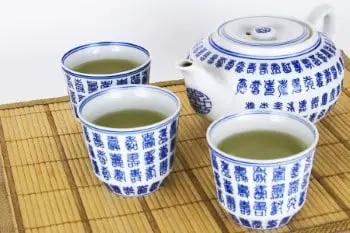
Love this article! I am inspired and will be getting the tea you mentioned. Thanks and keep sharing!
Thank you, glad you found it useful.
Wow your tips are great.